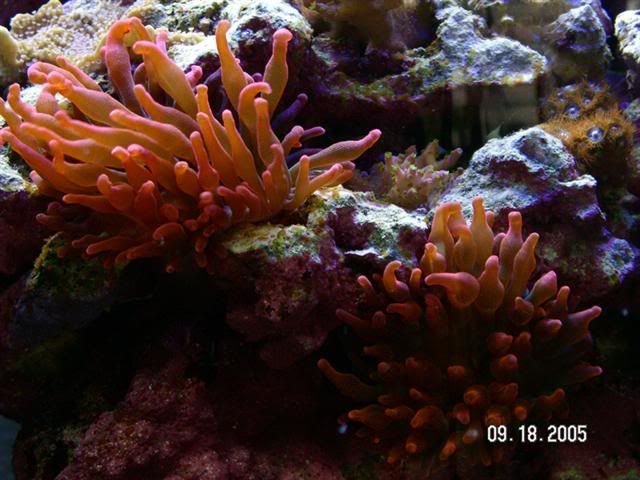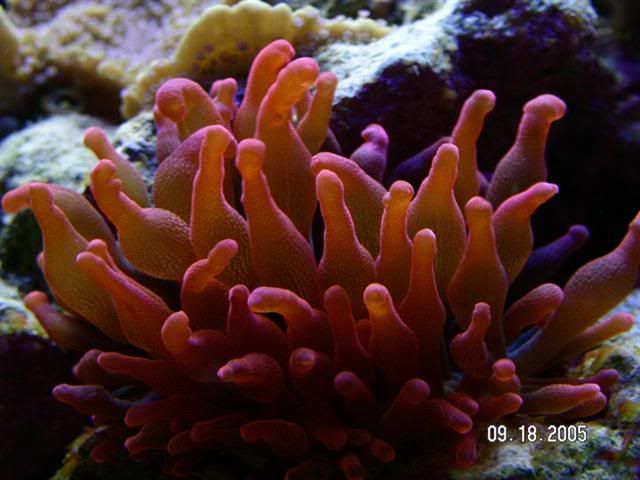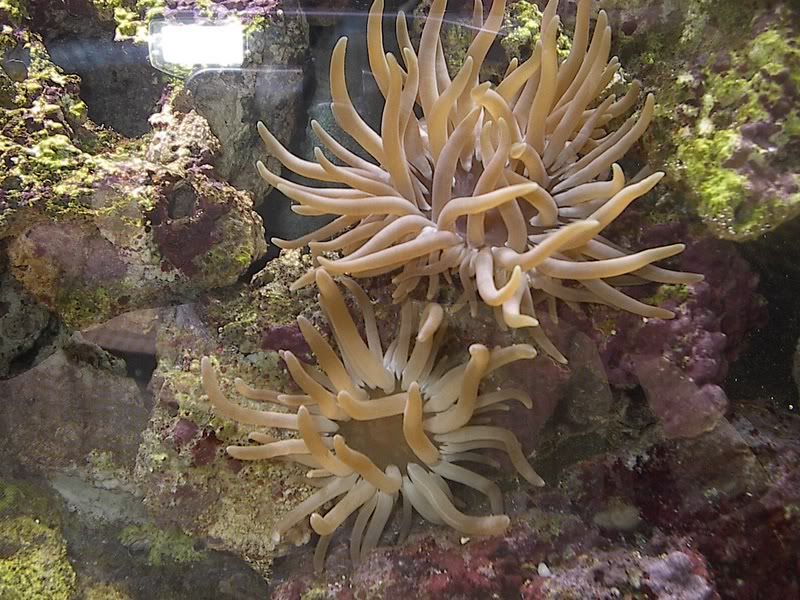Viper - nice picture of your guys.
My sabae is the only anemone that doens't seem to be doing well and I won't buy one again. And yes, I will glady take pictures of my other guys to show you how they look.
For starters, here is a pic of my LTA, snow white. AND, the picture was taken with just the actenic lights on.
People keep quoting the author of the Conciencous Marine Aquariast book. Yes, great book, but it doesn't say how often he considers underfeeding, he remains non comital.
Read the article written by Dr. Ron Shimek, he clearly states that anemones need strong lighting in either pc florescent, or metal halide. And he said to feed regularly, every couple days or so.
Dr. ron Shimek's website tallking about the need to feed anemone's regularly
Please read this page from Dr. Shimek and tell me how he is wrong? At least he indicates the frequency, can't say that about the Marine aquriast book I have. The author sounds like he likes to lightly or underfeed many tank inhabitants. If you read through his comments about other fish and animals, he doesn't like to feed. I don't see the author having the title Dr. next to his name.
also, by the way, I don't have them very long, some only a couple weeks, some a couple months. I will take more pictures over the next couple days.
I have a 55 gallon tank with
1 - The state of the art Lunar Aqualight is a compact light fixture with a Blue-Moon-Glow LED light which creates rhythmic glitter and shimmering effects while promoting spawning cycles in corals and other reef life. These fixtures allow you to recreate the effects that both the sun and moon have on sealife. Includes: 96 watt 10,000K Daylight bulb, 96 watt True Actinic 03 Blue bulb and two 3/4 watt Lunar Blue-Moon-Glow LED lamps. Dimensions are 36" x 7" x 2.5".
And
1 - The aqualight is the complete line of compact fluorescent lighting units for your saltwater, reef or freshwater aquariums. The aqualight is a sleek and streamlined fixture, designed to enhance and compliment your aquarium. The compact and low profile style is equipped with a modern aluminum housing and a highly-polished reflector for optimal lighting. It also includes a protective acrylic lens cover and coralife compact fluorescent lamps 96 watt coralife 50/50 compact fluorescent lamp included.
The two light strips give me 288 wpg / 50 gallon tank (only about 45 gallons of water) = 6.4 wpg. Plenty of light, low heat - 1 unit with a fan and distributed well over the tank. Most animals are raised 1/2 way up the tank with live rock, so therefore they are not far from the light source, which also helps.
I see the metal halide lamps in the lfs and they are very hot, which ads burdent to keeping the tank temp under control of the heat. And, if metal halide is required for anemones, then why does every lfs that I go into never have anemones under metal halide lamps? And minimal current.
The animals I notice being a must for metal halide are the clams, hammers, bubble coral etc. Not anemones.
I haven't heard anyone dispute what Dr. Shimik has to say about lighting and feeding. As far as lighting goes, he states that strong light is required for them, metal halide or a strong lamp system like I have.






